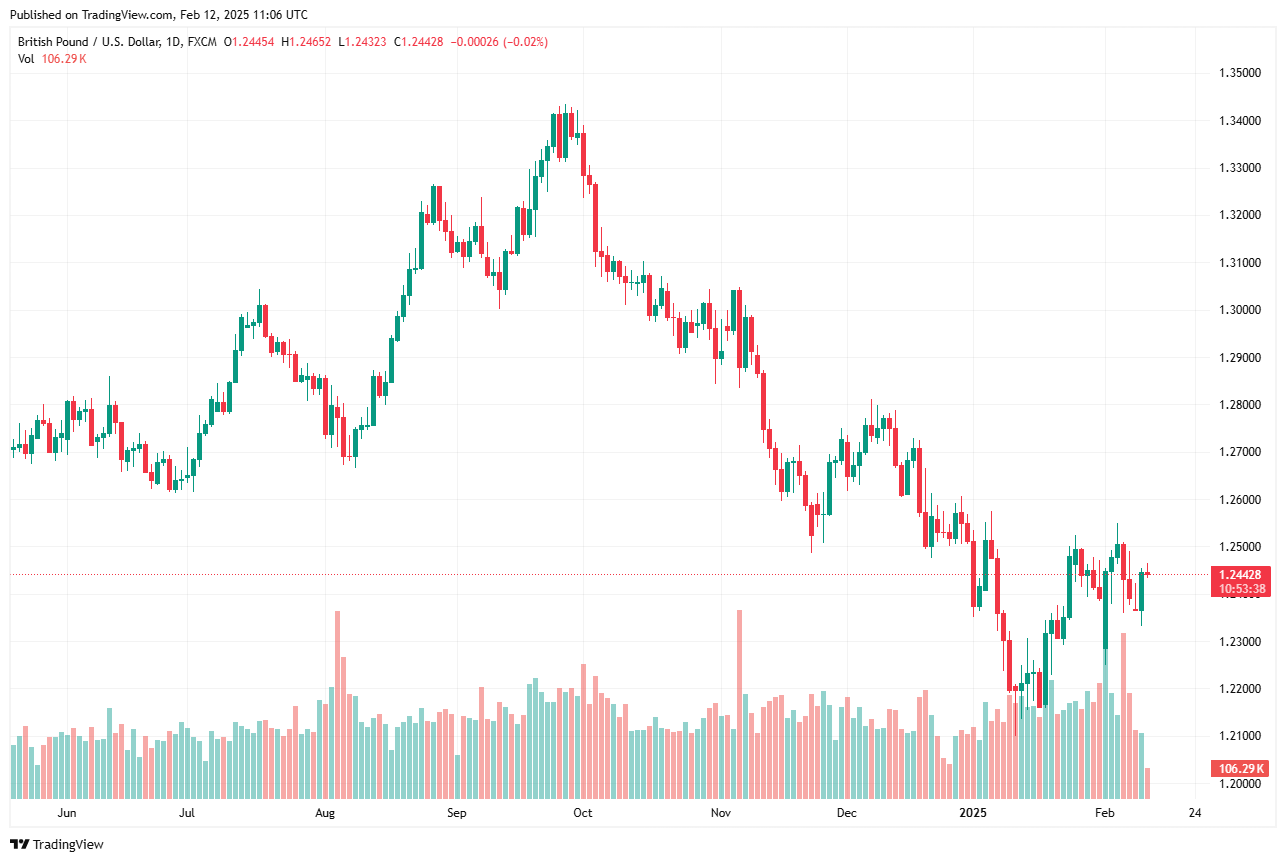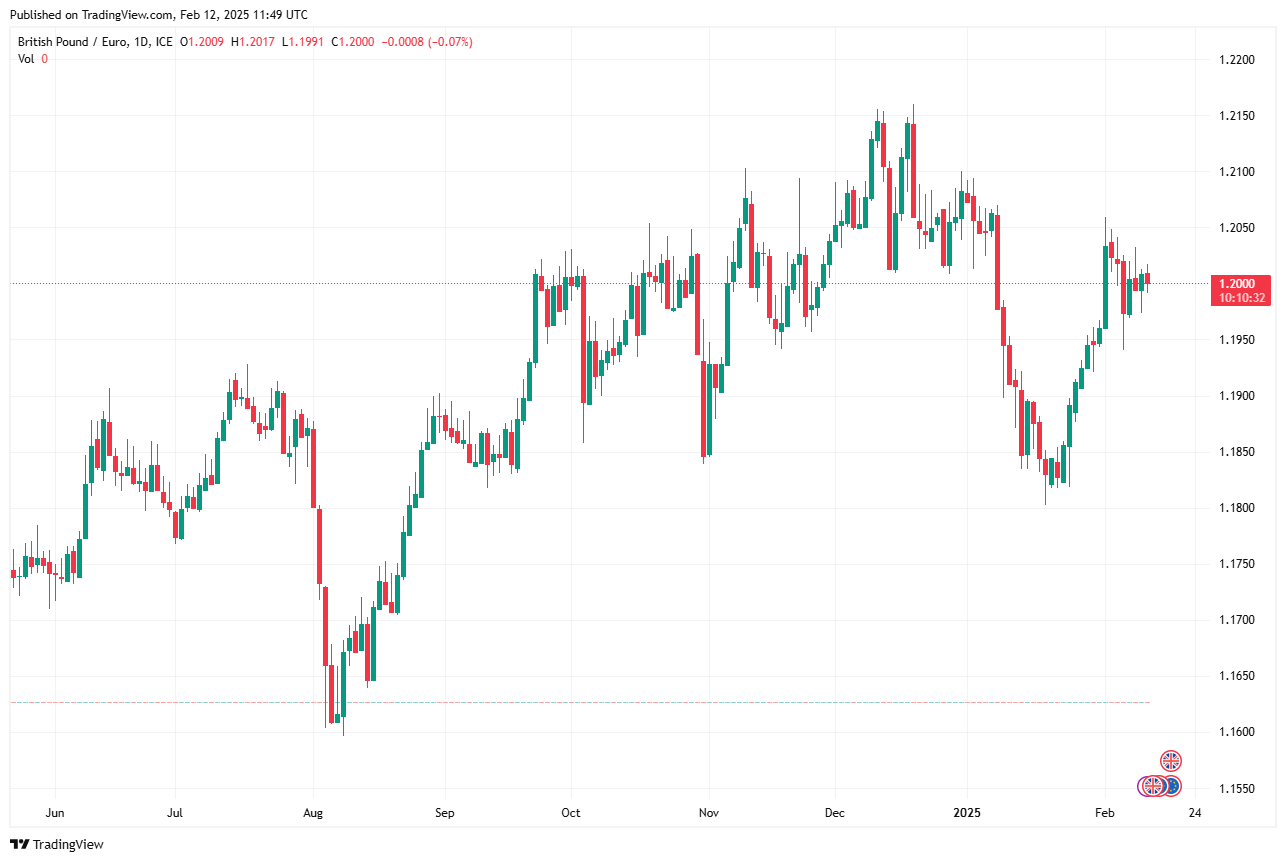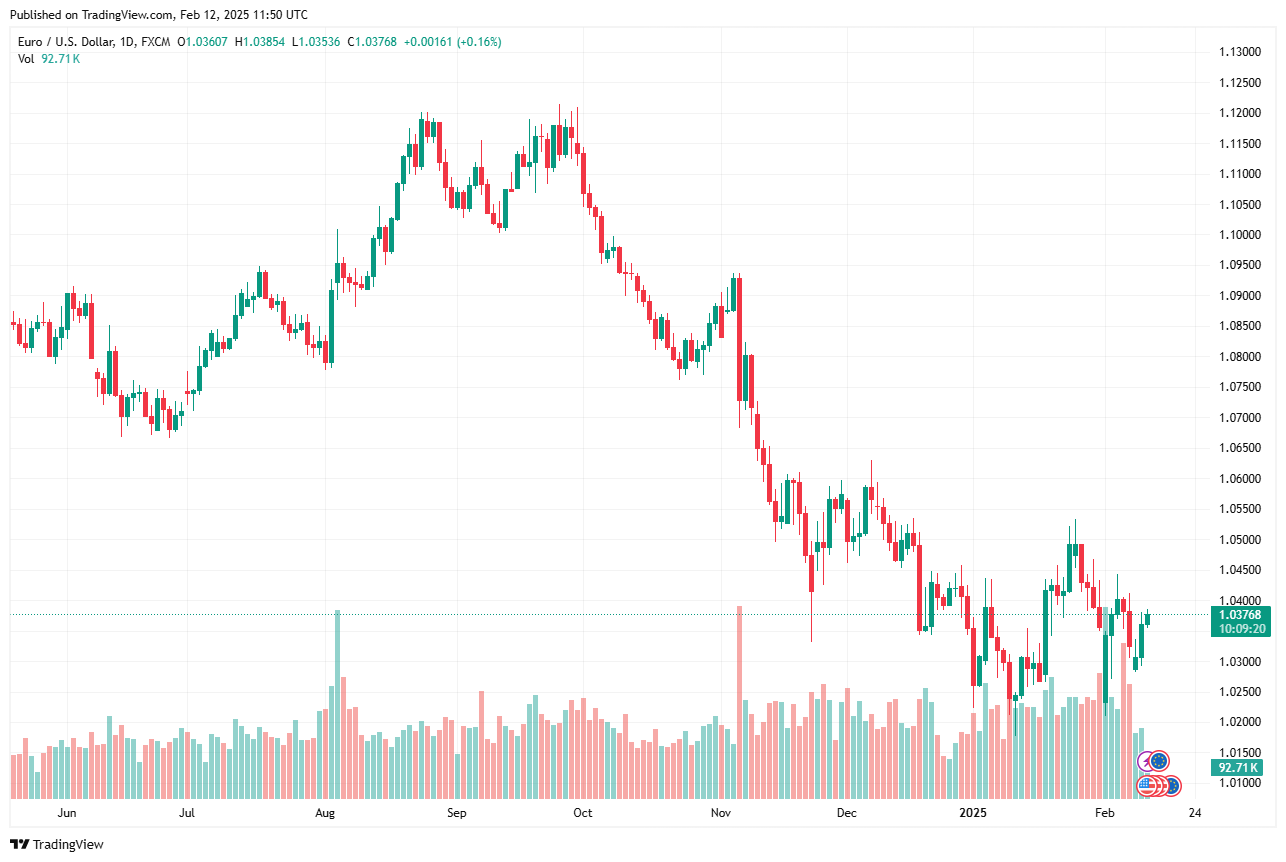- Monfor Dealing Team
- News
Sterling back on the front foot after GDP surprise
- Monfor Dealing Team
- News
Dollar Decline Surprises the Market, Not Us
The US dollar weakened yesterday against the euro, despite US inflation coming in hotter than expected and Treasury yields rising across the curve. Equities ended the day in negative territory but managed to recover more than half of their intra-day losses. Consumer prices exceeded expectations across multiple measures, with the monthly figure reaching 0.5% and the core reading at 0.4%, both surpassing forecasts of 0.3%. Headline inflation has now returned to 3% for the first time since June 2024. In response, Federal Reserve Chair Jerome Powell acknowledged that the latest data indicated further work was needed to bring inflation under control.
Markets reacted to the inflation surprise and Powell’s comments by scaling back expectations for interest rate cuts, now anticipating just one reduction this year. However, the dollar failed to capitalise on this shift, confirming its asymmetric reaction function. Instead, geopolitical optimism took precedence. Reports surfaced suggesting that President Trump may be actively working on a peace deal with Ukrainian President Zelensky and Russian President Putin.
This development bolstered risk sentiment, lowered oil prices, and overshadowed the Fed repricing, putting downward pressure on the US dollar. The market reaction aligns with our view that, for now, positive geopolitical developments have a greater influence on foreign exchange markets than concerns about a delay in Fed rate cuts. If this trend persists, the dollar could remain vulnerable despite resilient US economic data.
Euro Strengthens Amid External Factors
The euro appreciated, defying the backdrop of rising US bond yields and revised Fed rate expectations. While US inflation exceeded forecasts—pushing Treasury yields higher and leading investors to price in just one Fed rate cut this year—the dollar weakened due to optimistic geopolitical developments. Reports that President Trump may be negotiating a peace deal with Ukrainian President Zelensky and Russian President Putin shifted market sentiment, reinforcing our view that geopolitical optimism currently outweighs Fed-related concerns.
In Europe, European Central Bank (ECB) policymaker Joachim Nagel further supported the euro by advocating a cautious approach to monetary easing. Speaking in London, the Bundesbank President dismissed the idea of targeting a theoretical “neutral” interest rate, instead urging caution in the ECB’s rate-cutting trajectory. This aligns with our perspective that, while the ECB is set to lower interest rates, expectations of aggressive easing may be overstated. With markets reassessing Fed rate cut expectations and the ECB signalling a measured approach, euro sentiment remains well-supported.
For the time being, investors appear more focused on geopolitical tailwinds than on narrowing nominal interest rate differentials. It is also worth noting that US market-based inflation expectations have been rising for some time, with certain maturities (such as the five-year tenor) reaching their highest levels in years. This theoretically reduces the real rate differential between the US and Europe.
Sterling Rises Above $1.25 Following Strong UK GDP Data
Sterling initially fell sharply against the US dollar following the release of the US inflation report but swiftly recovered as risk appetite improved amid encouraging geopolitical news regarding a potential resolution to the war in Ukraine. As a result, the euro and central and eastern European currencies outperformed, causing GBP/EUR to lose its grip on the €1.20 level. Safe-haven currencies such as the Japanese yen tumbled, with GBP/JPY now up nearly 3% week-to-date.
Meanwhile, GBP/USD has surpassed its 50-day moving average at $1.2475. A daily close above this level would increase the likelihood of a move towards the $1.26-$1.27 range. However, despite stretched US dollar positioning and valuation, there remain numerous dollar-positive drivers that could limit sterling’s upside. Indeed, foreign exchange options traders are taking precautions against a potential decline in the pound. GBP/USD one-month risk reversals are two standard deviations lower than their one-year average, indicating that traders are significantly more concerned about sterling weakening over the next month than they have been on average over the past year. Meanwhile, one-month implied volatility—reflecting the market’s expectations for price fluctuations—has stabilised after hitting two-year highs in January but remains within the 80th percentile of observations over the past year.
On the macroeconomic front, UK GDP data released this morning exceeded expectations, providing a further boost to sterling. Preliminary fourth-quarter GDP unexpectedly expanded by 0.1% on a quarterly basis, defying expectations of a 0.1% contraction. Additionally, December’s industrial production data came in slightly better than anticipated, contracting by 1.9% year-on-year compared with the forecasted -2.1%. These figures highlight the resilience of the UK economy, which should support the pound in the short term as traders reassess expectations for the Bank of England’s interest rate trajectory. Traders now anticipate 55 basis points of rate cuts, down from over 60 basis points priced in at yesterday’s close.
However, we remain mindful that the UK is not immune to global economic headwinds, particularly given the slowdown in trade due to tariffs. Furthermore, while the UK maintains a balanced goods trade relationship with the US, it runs a significant trade surplus in services, which could be vulnerable to tariffs extending beyond goods trade—although such measures are typically more challenging to implement.













